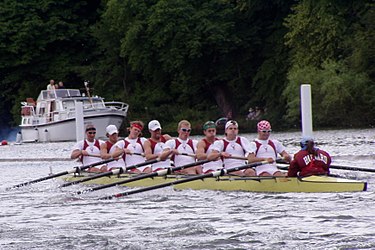Clinfowiki
—Becoming wiser together
We come together in many ways. Mobs come together and create chaos. Rowing crews come together in perfect synchrony to win races. Most of our group activities are more purposeful than mobs and less disciplined that rowing crews.
Unfortunately, groups are more often discordant than harmonizing. How can the wisdom of the populace be harnessed to solve our greatest problems, unleash human flourishing, and create meaning? How can a mob evolve into a harmonious, joyous, and productive team?

This curriculum draws on several courses and essays to help us come together harmoniously. Complete each in the suggested order, or in any order you choose.
- Collective Wisdom Success Stories—Groups of ordinary people achieving extraordinary results
- Tragedies of Collective Folly— Groups of well-intentioned people making disastrous decisions
- Intellectual Honesty—Accurately communicating true beliefs.
- Earning Trust—Relying on Another
- Knowing how you know—Describing how we choose our beliefs.
- Practicing Dialogue—Thinking together
- Finding Common Ground — Aligning concepts with reality
- Transcending conflict— Resolving contradictory goals
- Unleashing Creativity—Welcoming new and useful ideas
- Create a safe space to foster collaboration
- Pursuing collective wisdom—Collaboration. When are two heads better than one?
- Socratic Methods—Seeking real good by questioning beliefs
- A socratic dialogue on What is the purpose of government?
- Creating Communities —Belonging
- Social Skills —Building Relationships
- Alleviating Loneliness—Reconnecting
- Being Friends — Connecting and belonging
- Informed Commitments — Knowing a partner
- Knowing Someone — Connecting
- Collective wisdom and common ground—Agreeing on matters of fact.
- Collective decision making—Agreeing on actions
- Liberating Structures – Including and unleashing everyone[1]
- Virtues—Excellence in being for the good
- Clarifying values—What we find most important
- Real Good Religion—Rebooting spiritual practice
- Finding shared values—Discovering what is most important to us.
- What matters—Focusing on what is most important.
- Envisioning our future—Describing your vision of our future.
- Evolving Governments—Unleashing collaboration
- Intentional Evolution—Choosing our future
The following materials have yet to be created on Wikiversity.
- Finding collective purpose—Working toward shared goals
- A Gallery of Governance—Many approaches to fostering collaboration.
- Collaborating with Artificial Intelligence—Expanding our community.
Further Reading
Students who are interested in learning more about coming together may wish to read these books:
- Owen, Harrison (April 21, 2008). Open Space Technology: A User's Guide Paperback. Berrett-Koehler Publishers. pp. 192. ISBN 978-1576754764.
- Briskin, Alan; Erickson, Sheryl; Ott, John; Callanan, Tom (October 1, 2009). The Power of Collective Wisdom: And the Trap of Collective Folly. Berrett-Koehler Publishers. ISBN 978-1576754450.].
- Sunstein, Cass R.; Hastie, Reid (December 2, 2014). Wiser: Getting Beyond Groupthink to Make Groups Smarter. Harvard Business Review Press. p. 176. ISBN 978-1422122990.
- Block, Peter (2009). Community: The Structure of Belonging. Berrett-Koehler Publishers. pp. 264. ISBN 978-1605092775 .
- Kidder, Rushworth M. (1994). Shared Values for a Troubled World: Conversations with Men and Women of Conscience. Jossey-Bass. pp. 332. ISBN 978-1555426033.
- Surowiecki, James (August 16, 2005). The Wisdom of Crowds. Anchor. pp. 336. ISBN 978-0385721707.
- Lipmanowicz, Henri; McCandless, Keith (2013). The surprising power of liberating structures: simple rules to unleash a culture of innovation (Black and white version ed.). S.l.: Liberating Structures Press. ISBN 978-0-615-97530-6.
- MacKay, Charles. Extraordinary Popular Delusions and The Madness of Crowds. CreateSpace Independent Publishing Platform. pp. 410. ISBN 978-1490361888.
- Sutton, Robert I. (September 1, 2010). The No Asshole Rule: Building a Civilized Workplace and Surviving One That Isn't. Balance. pp. 238. ISBN 978-0446698207.
- ↑ Liberating structures are a collection of innovative governance structures designed to include the participants and unleash their creative energies. Extensive materials are freely available from their website: https://www.liberatingstructures.com














